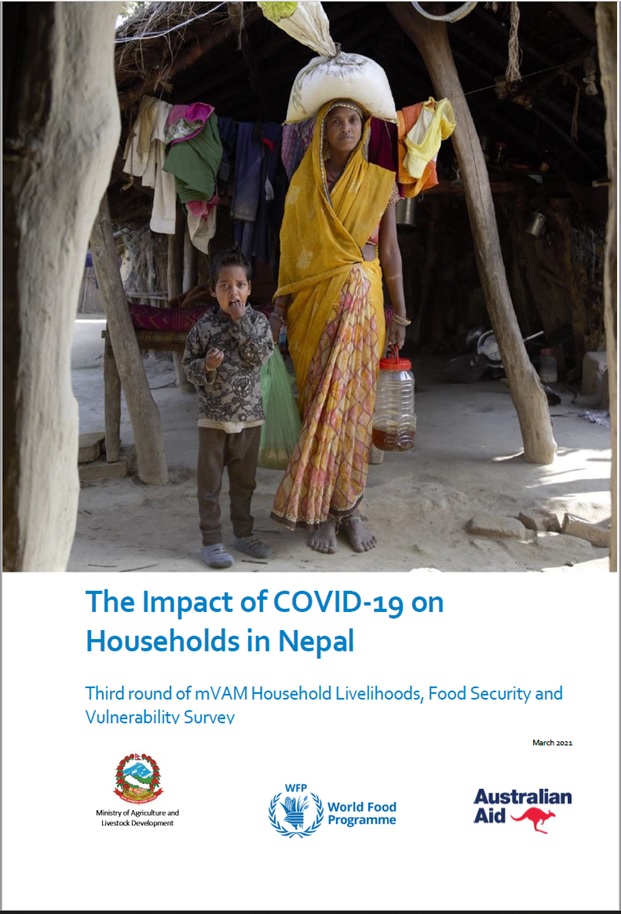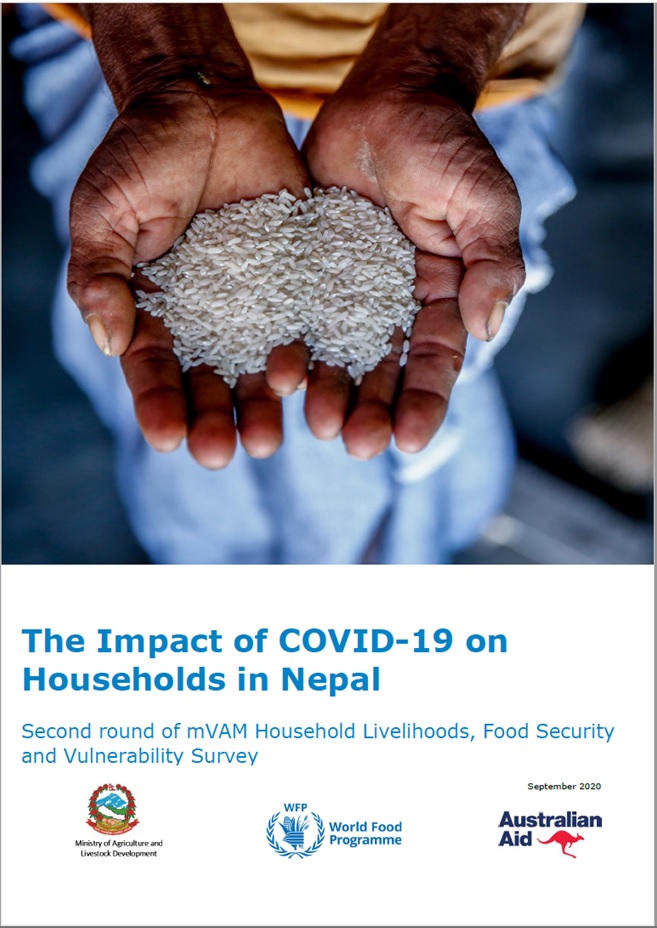Home > PUBLICATIONS > Food Security Bulletins >
Food Security Bulletins
-
Food Security Bulletin No.26 2009-12-31

The recent completion of the major harvest period of the year has improved the overall short-term food security situation across the country. At a national level WFP household surveys revealed that food stocks and consumption levels have seen an improvement since late last year when the harvest begun.
-
Food Security Bulletin No.25 2009-10-30

The total number of food insecure people across Nepal is estimated to be 3.7 million, this represents approximately 16.4% of the rural population. WFP Nepal is feeding 1.6 million people which has had a significant impact on reducing this figure.
-
Food Security Bulletin No.24 2009-08-28
The current food security situation is worrisome and has deteriorated significantly compared to the same period last year. Despite significant food assistance to the Karnali region, most of the districts in the Karnali and Far West are currently classified as highly food insecure.
-
Food Security Bulletin No.23 2009-05-29
Because of severe winter drought, 700,000 people in the Mid- and Far-Western Hills and Mountains are in need of immediate food assistance in addition to nearly one million people who are currently supported by WFP. The drought resulted in decreased national crop production for wheat and barley of 14.5% and 17.3% respectively; however, crop losses in many Hill and Mountain districts of the Mid- and the Far-West regions were more than 50%.
-
Food Security Bulletin No.22 2009-01-30
Over 26,000 people are highly food insecure in Dolpa, Jumla and Mugu where cases of acute child malnutrition have been reported. Several areas of the Hills and Mountains of the Mid/Far-West are highly or moderately food insecure due to remoteness and marginal agricultural land, poor to moderate summer crops production (making people more dependent on purchased food), high food prices and limited income opportunities.
News & Events
- Brief on the Food Security Situation in Nepal (Mid-July to mid-November 2017)
- Launch of Food Security Information System for Nepal
- Second Advance Estimate of 2016/17 Wheat Production in Nepal using CRAFT
- Brief on the food security situation in Nepal (Mid November 2016 to Mid March 2017)
- Updated NeKSAP guidance on food security response analysis and district food security monitoring

